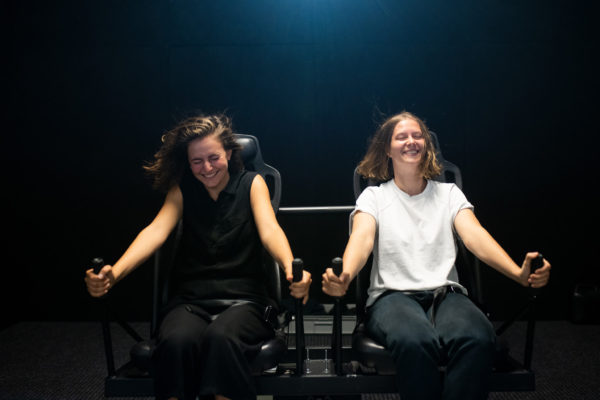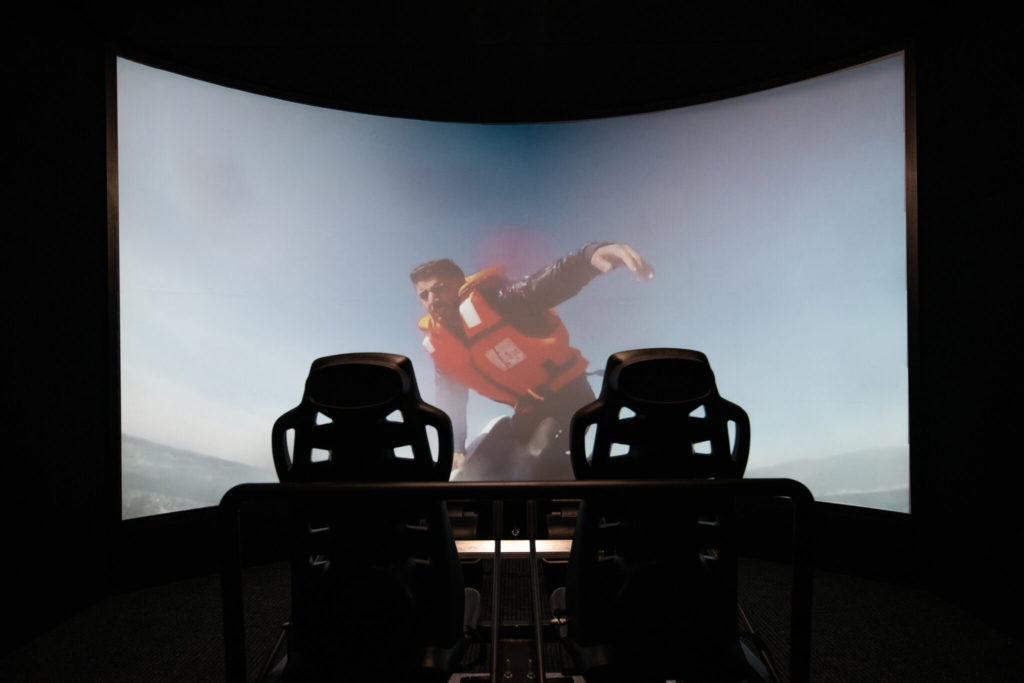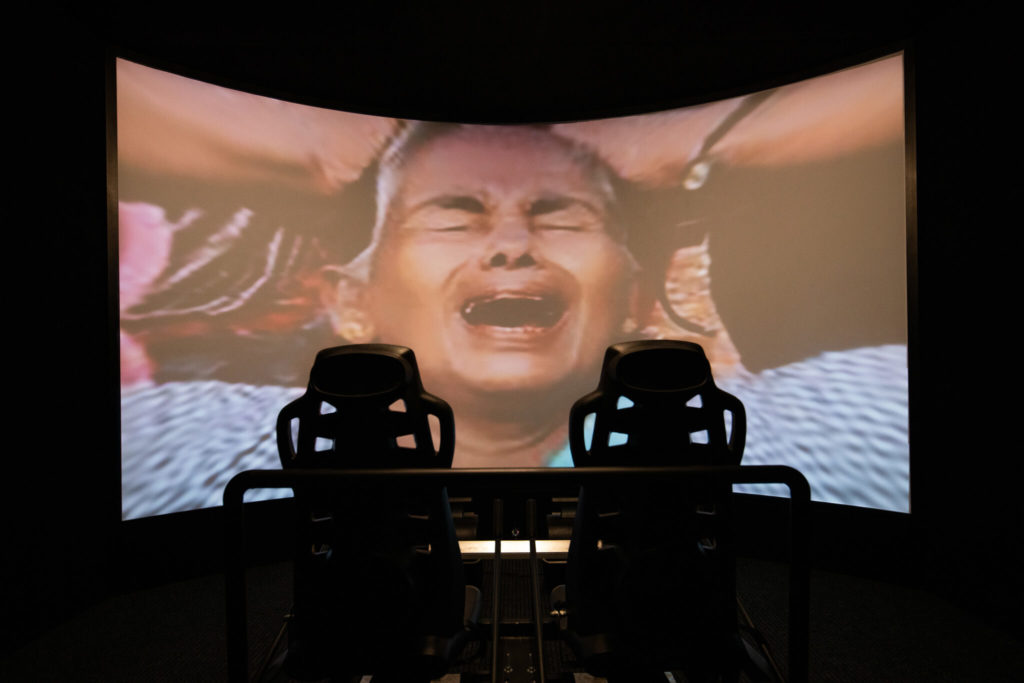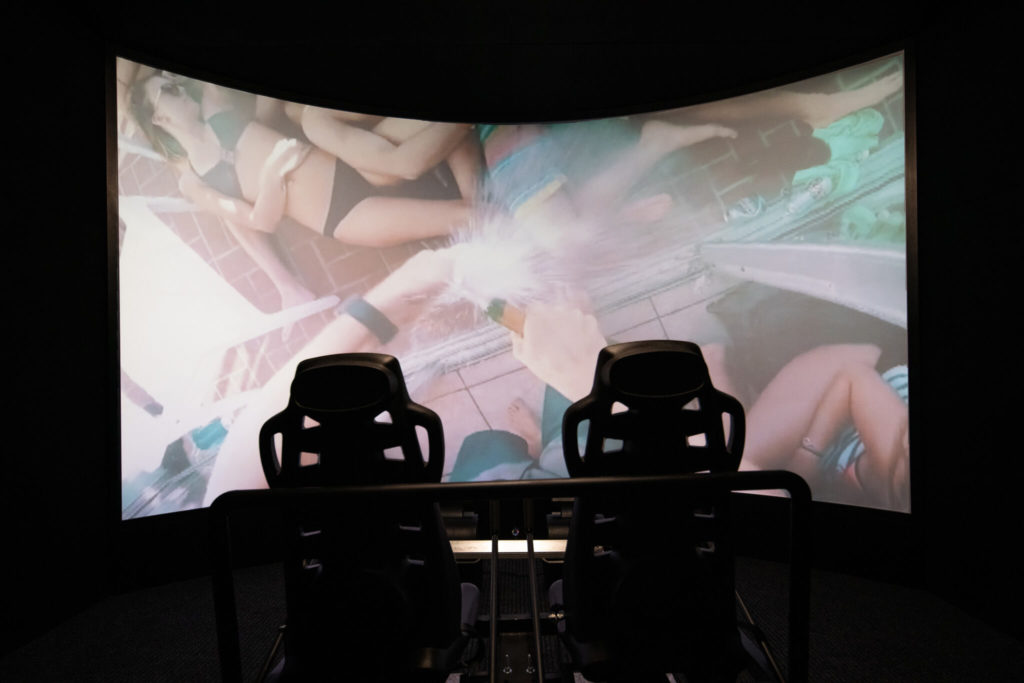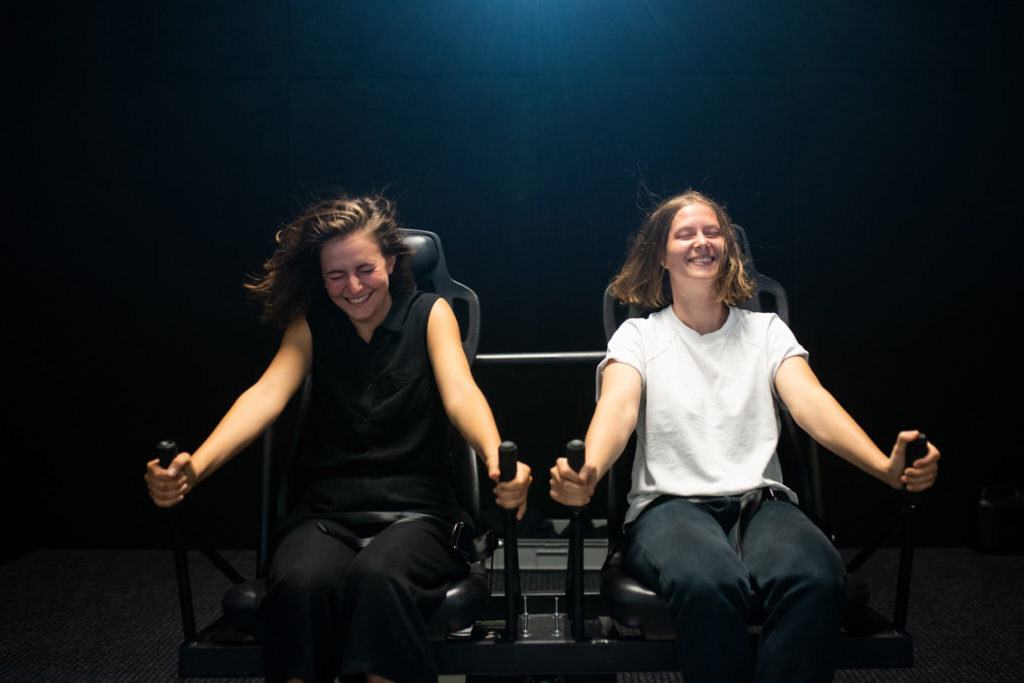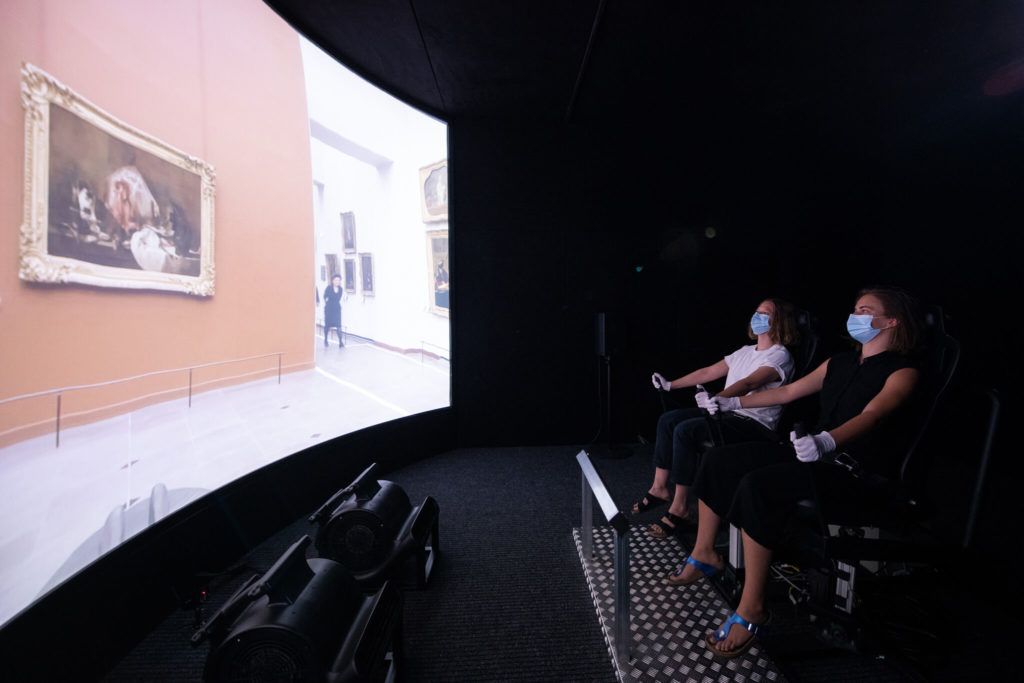Simon Fujiwara
Empathy I, 2018
5D-Simulator-Installation with sound,
video, motion, water, and wind, 3:49 Min.
Courtesy the artist and Esther Schipper Gallery, Berlin
*1982 in Harrow, United Kingdom
lives in Berlin and London
Simon Fujiwara explores the dominant images and narratives of our time in a process he calls ‘hyper engagement’ with the capitalist-entertainment worlds that shape how we communicate and consume. He is especially interested in the stories and strategies that individuals and societies use to define themselves and form their identities in a time where the internet manipulates and constructs our sense of reality. Crossing the boundaries of different media, Fujiwara works with video and installations, performance art, sculpture, painting and a wide range of technical media.
At the centre of Empathy I is a 5D cinema inspired by theme park rides. Here the artist replaces the computer-generated fantasy worlds with real-life YouTube footage of personal, emotional and intense physical experiences shot by anonymous users. The experience of viewing the lives of others on screen is transformed into a powerful physical experience through the use of robotic moving seats synchronised to the movements of the camera. The intensity and speed of the images together with the physicality of the work overrides the brain’s ability to process meaning in the moment, offering instead heightened but simulated feelings of arousal, calm, fear and pleasure. Simon Fujiwara reflects here on the accelerated dynamic of our visual consumption – the sacrifices and gains we make as we increasingly experience life through a lens.
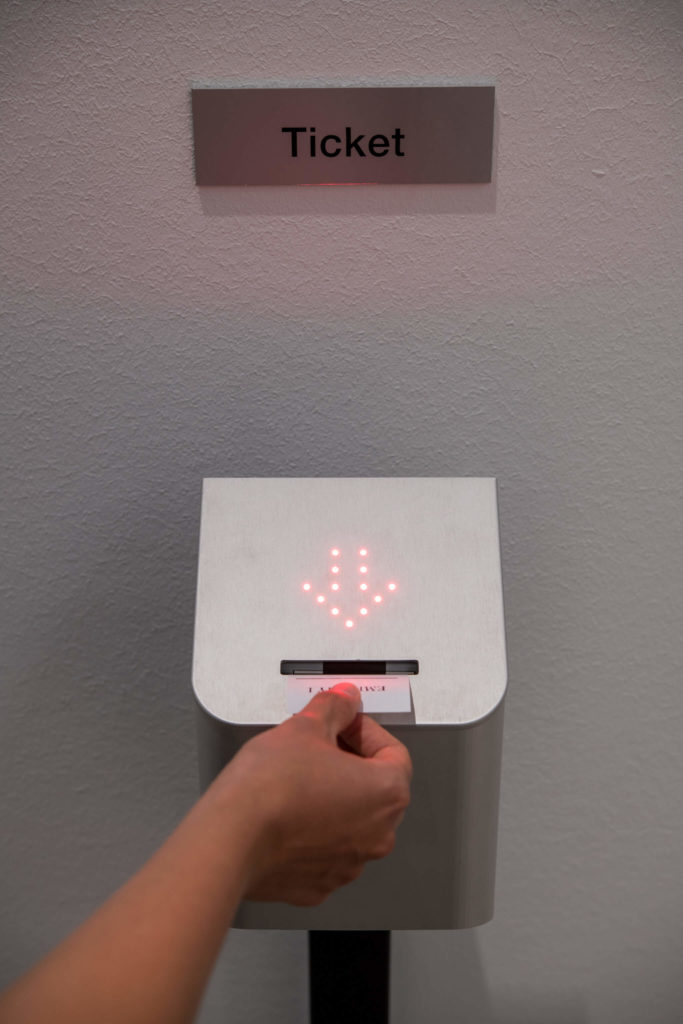
There is no narrative or dramatic arc leading to an emotional climax
Our world today is extensively digitalised. We communicate via various digital media, stream films, read e-books, play online games or find out about the latest news by reading online newspapers and following social media. Technological progress has created a multitude of new possibilities that are triggering lasting changes in the way that we live together as a society. Our media culture has changed much more fundamentally than is evident from the shift from scheduled television to consumption on demand, or from the printed book to the e-reader. This far-reaching transformation has now been a subject of debate in contemporary media criticism for some time. The characteristics of these changes go beyond the increased speed of communication and information, and the difficulty of distinguishing between journalism, the manipulation of opinion, and advertising. The traditional sender-receiver model is also shifting. With the old mass media (such as newspapers and television), a sender directed its message at a large number of receivers. The growth of social media, however, is transforming this relationship, turning everyone into a potential sender.
Observations like these were the starting point for Empathy I. The accelerated dynamic of our visual consumption is resulting in a bitter battle for our attention. But the constantly growing volumes of available content and images are also resulting in a qualitative change. The most emotive image is the one that stays in our minds, whether it is bizarre, tragic, funny or exciting. It is not just our attention as receivers that follows this principle. Our pretensions to success as senders – which is measured in likes, shares, retweets and comments – are also guided by it. The digital and analogue worlds interact in this context through experiences and situations from our own real lives that are documented and staged via media. Validation is the objective of the digital response that we hope to achieve. This validation contributes significantly to how we form our personal identities. At the same time, demand is growing for intense digital visual experiences to consume, ones that promise diversion and stimulation. The self behaves like a product and a consumer in equal measure. In this way, it is able to satisfy its craving for validation as well as its curiosity and desire to watch.
However, intense, short-lived experiences leave an emptiness behind them. There is no narrative or dramatic arc leading to an emotional peak; instead, aborted climaxes follow non-stop one after another. Digital technology’s limited capacity to be a satisfying replacement for physical analogue experience and one’s own emotional sensations becomes the central theme in Empathy I. In this context, Simon Fujiwara asks how important physical experience is. Can physical experience be simulated? Do our bodies and minds actually operate in such a way that real emotions can be produced artificially? Or will there always be a crucial difference between what we physically and mentally experience and what is conveyed via media, no matter how far technology advances?
Simon Fujiwara reflects these developments by making us observers of, and participants in, different situations in a carefully planned dramatic composition. We enter a waiting area, just like the ones that we encounter in everyday life. We draw a number. There are places to sit and a water dispenser, and free Wi-Fi is available. Several editions of Fifty Shades of Grey lie on the table. In each copy, a bookmark marks the place where the two protagonists in the story freely enter into a sadomasochistic relationship and sign a contract governing it. The work points to the fact that, day in, day out, we consciously surrender ourselves to the internet and in particular to social media. It is also a comment on the contradictions in our society: its liberal and democratic values are at odds with what is idealised and eroticised in the novel, which was much criticised as misogynistic and pro-capitalist. Against this backdrop, the novel’s enormous success has been a source of preoccupation for Simon Fujiwara. During his research, he found out that so many copies of the novel had been given to the charity Oxfam that it begged people to stop donating it. The donated copies were impossible to sell, but they could not be recycled either because the glue in the binding turned out to be toxic. Thousands of books were left suspended in a kind of limbo, without any possible way in which they could be used. The artist decided to buy all of Oxfam’s stock and use it for his work in order to create a framework for reflection on this chain of paradoxes.
Johanna Adam
Simon Fujiwara grew up in Japan, Spain and the UK. He studied architecture at the University of Cambridge and fine arts at the Städelschule in Frankfurt. The artist’s work is represented in numerous international collections, such as the Museum of Modern Art and the Guggenheim Museum in New York and the Tate in London. He was the recipient of the 2010 Baloise Prize at Art Basel and the 2010 Frieze Cartier Award and a nominee of the prestigious Preis der Nationalgalerie in 2019.



